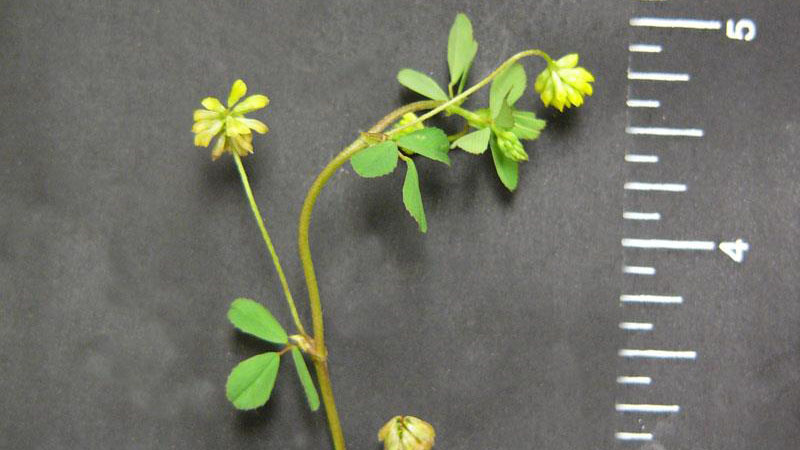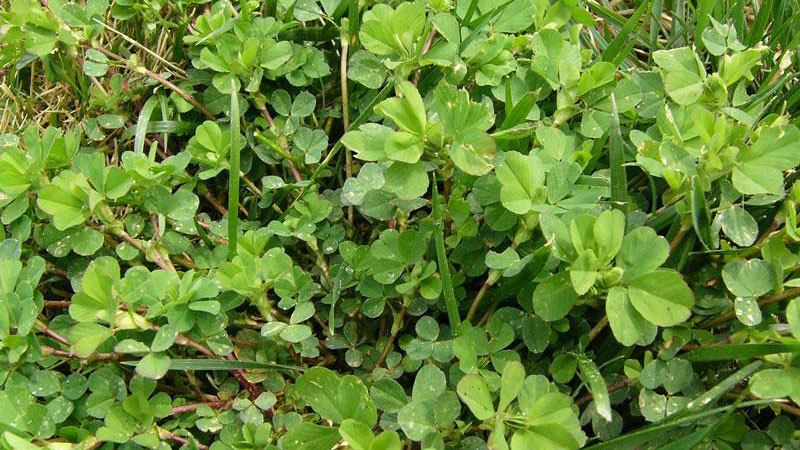Description
Several species of hop clover (Trifolium campestre) are found in North Carolina. They are similar in appearance and they respond similarly to herbicides. These are winter annual or biennial weeds. Hop clover has a trifoliate leaf similar to white clover. Leaflets have prominent veins and the terminal leaflet of each leaf is on a short stem. Hop clover has short, hairy, reclining, slender stems, which are somewhat reddish. Flowers are bright yellow with numerous closely associated flowers borne in clusters. Each individual flower produces a single seed.
Cultural Control
Winter annual broadleaf weeds germinate in the fall or winter and grow during any warm weather, which may occur in the winter, but otherwise remain somewhat dormant during the winter. They resume growth and produce seed in the spring and die as temperatures increase in late spring and early summer. They quickly invade thin turf areas especially where there is good soil moisture. Shade may also encourage growth. Many have a prostrate growth habit and are not affected by mowing. A dense, vigorous turf is the best way to reduce the encroachment of winter annual weeds. First, select adapted turfgrass cultivars for your area and then properly fertilize, mow, and water to encourage dense growth.
Species Data
- GROWTH SEASON / LIFE CYCLE
- winter annual or biennial weed
- GROWTH HABIT
- LEAFLET NUMBER
- LEAF MARGIN
- serrated/toothed
- LEAF HAIRS
- none or on upper/lower surface
- LEAF / LEAFLET SHAPE
- LEAF WIDTH
- <1⁄2 - 1 inch
- LEAF VENATION
- pinnate; prominent veins
- LEAF ARRANGEMENT
- alternate
- ROOT TYPE
- fibrous
Figure 24
- fibrous
- FLOWER COLOR
- yellow
Figure 25, Figure 26
- yellow
Publication date: Nov. 20, 2017
N.C. Cooperative Extension prohibits discrimination and harassment regardless of age, color, disability, family and marital status, gender identity, national origin, political beliefs, race, religion, sex (including pregnancy), sexual orientation and veteran status.


























